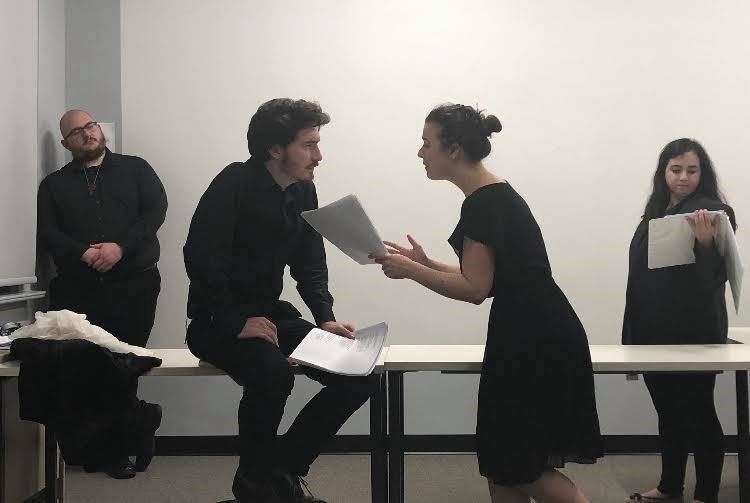By: Amanda M. Rogus
This coming December, I am thrilled to bring to the Staunton community a trauma-focused version of Shakespeare’s Measure for Measure. Working in conjunction with my current educational psychology masters research on sexual assault and domestic violence, this play will be the first show to be performed in the bar area of Mary Baldwin Shakespeare and Performance’s Wharf building. This trauma drama takes this notorious problem play and reframes the work as a domestic tragedy. The play educates and informs the audience on the impact trauma has on people dealing with emotional, physical, and sexual abuse. The show is staged as a minimalist production with four actors each playing two or more characters. This small-scale show nicely speaks to many of the themes and issues recently addressed in the Staging Gendered Violence Symposium that the Mary Baldwin Shakespeare and Performance Program and undergraduate theatre community just hosted in mid-November. All of the proceeds of these performances will benefit the New Directions Center. This non-profit organization seeks to help women in the Staunton area who are survivors of domestic violence and sexual assault.
We have been in rehearsals for about a month and open in approximately two and a half weeks. Throughout this process we have had the luxury of having several MLitt students observe to inform and guide their current thesis research. Additionally, we brought in 2019 MFA alumnus Hannah (Rock) Roccisano and current second year MLitt student Sarah Duttlinger English to stage the intimacy and violence that occurs throughout this production. The stellar expertise of these women helped us sculpt safe, truthful moments to help communicate the story in a way that will articulate the severity of these situations onstage. It was important to me to have people work on the intimacy and fight direction as I wanted to establish a consent-based rehearsal room. Each of our rehearsals begins with an agenda to provide clarity for the daily plan and concludes with each person in the rehearsal room sharing something that they are grateful for. Additionally, in a collaborative-based process, I invite and encourage my actors to explore and discuss choices out loud. I appreciate when an actor challenges a choice or tries playing the antithesis. The openness of space in my rehearsal room allows for an inundation of playable choices. Some of these choices and ideas will ultimately make the show and others serve to inspire and inform our mode of communicative storytelling.
As we approach December rehearsals, we are thrilled to continue to dive into the abundant complexities in this work. This show runs about an hour and fifteen minutes with no intermission and the action does not cease for a second. Cut exquisitely by Claire F. Martin to fit my directorial aesthetic, the play centers around these traumatic moments in a way that illustrates the tragedy that exists when cutting out the comic subplot. As the director, I was particularly interested in exploring the relationships in this play and how trauma affects each character differently. With characters as rich as Isabella and Angelo who are two sides of the same coin, each rehearsal seems to dig deeper into the main themes in a way that unpacks wonderful active choices. I have been lucky enough to work with a truly remarkable group of actors including Claire F. Martin, Jude Van de Voorde, Eli English, and Marissa Marcus. The process of working with these four giving, caring artists has been a true delight. With such a dark subject matter, the consistent, focused dedication of these four performers has brought out the horrid reality of inflicting such trauma on victims. The grace, respect, care, and gratitude shown at every rehearsal continues to allow for great art and storytelling to emerge. This play provides voice for the speechless and nicely illustrates how trauma can morph a person entirely, affecting her mind, body, and spirit.


